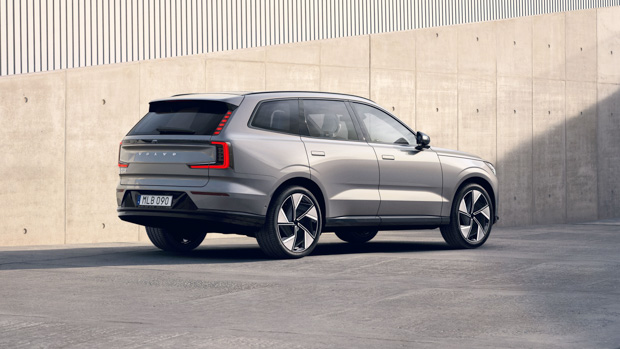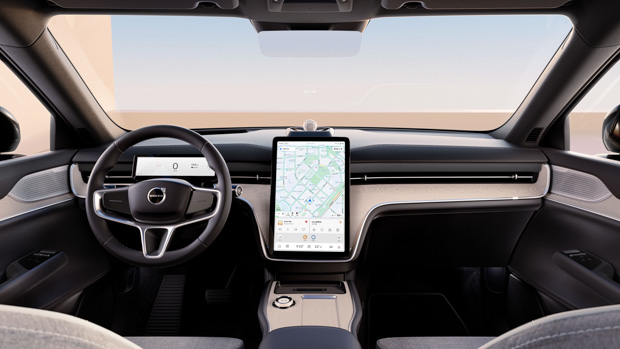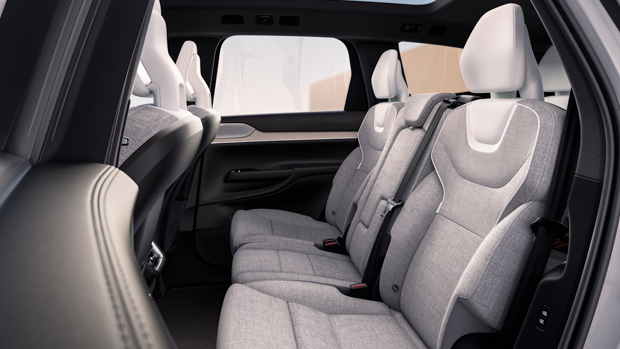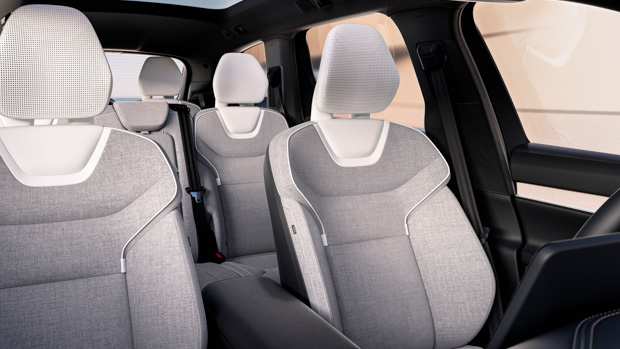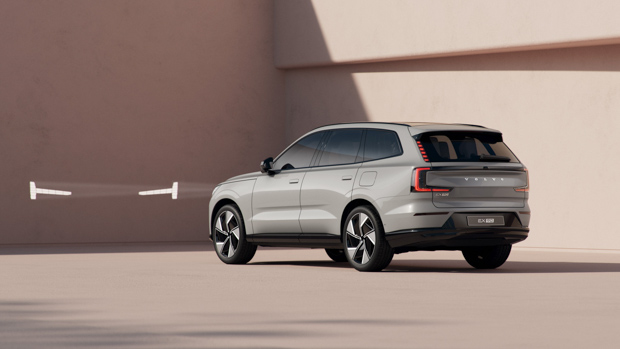-
Car Reviews
- All reviews
- Midsize SUVs
- Small cars
- Utes
- Small SUVs
- Large SUVs
- Large cars
- Sports SUVs
- Sports cars
- Vans
Latest reviews
- Car News
-
Car Comparisons
Latest comparisons
- Chasing Deals
Large SUV has dual electric motors, 380kW/910Nm and up to 600km range. It’s due in Australia in 2024, but launch models could cost over $170,000.
Volvo has revealed its full electric EX90 seven-seat SUV – an EV replacement for its XC90 – set for production next year and on-sale in Australia in 2024.
Last week, Volvo Car Australia said that from 2026 it will only sell fully electric cars in Australia – four years earlier than the brand’s 2030 global target.
The flagship EX90 promises up to 600km (WLTP) from a single charge from the initially available twin-motor all-wheel-drive version. Its 111kWh battery can be charged at 250kW in ideal conditions, giving from 10 to 80 per cent capacity in under 30 minutes.
Volvo says the dual motors in the EX90 Performance version offer 380kW and a monstrous 910Nm of torque, meaning a sub-five seconds 0-100km/h time, despite a kerb weight of 2818kg. The same drivetrain and all-electric SPA2 platform are shared with the recently-revealed Polestar 3 Performance.
The (for now) entry-level EX90 Twin Motor model brings 296kW and 770Nm with a 5.9 seconds 0-100km/h time. Less potent versions, including a single motor 2WD, would likely follow to make the seven-seater more affordable.
While we know the EX90 is coming to Australia in 2024 (it’ll likely be built at the brand’s Chinese plant), pricing hasn’t been revealed. But right-hand-drive UK indicative prices have been told: £96,255 ($170,000) for the Twin Motor and £100,555 ($178,000) the Twin Motor Performance.
Such numbers would make the EX90 by far the priciest Volvo on our market, a title currently held by the $121,990 XC90 Recharge Ultimate PHEV.
With a stark absence of seven seat EVs on the Australian market – the Mercedes-Benz EQB is currently the only one on sale here – the EX90’s three-rows hold huge appeal.
Its dimensions make it possible. It’s marginally longer than the current XC90 at just over five metres, and wider too. With seven seats in place there’s still 310 litres of boot space; with the third row folded it grows to 665 litres. With both rows folded there’s a van-like 1915 litres.
Standard features on the range-topper include air suspension, 22-inch alloy wheels, Thor’s hammer pixel LED headlights, Nordico recycled fabric upholstery, panoramic glass roof, soft close doors and four-zone climate control.
It’s fitted with all the necessary hardware to enable bi-directional charging, meaning the vehicle’s battery can be used as an extra energy supply to power your home or electrical devices.
Volvo says it plans to “make bi-directional charging available in the future, starting with selected markets.”
The EX90 brings what’s called Unreal Engine, a 3D tool developed by Epic Games, to ensure “lightning-fast computing power and high-quality graphics” for the in-car screens and head-up display.
The centre screen is expectedly massive – 14.5-inches and with built-in Google and wireless Apple CarPlay and Android Auto – while the cabin oozes minimalist chic with barely a button to be found.
There’s standard 5G connection where available, a Bowers & Wilkins audio system with 25-speaker Dolby Atmos and headrest-integrated speakers.
Phone key tech is also standard, meaning your smartphone serves as your car key, automatically unlocking the car and applying your personal driving profile.
Volvo’s rightly regarded as a safety pioneer, and the EX90’s safety standard is “higher than any Volvo car before it.”
There’s an “invisible shield of safety” thanks to cameras, radars and lidar (light detection and ranging) connecting to the car’s NVIDA DRIVE core computers, which run Volvo’s software to create a “real-time, 360-degree view of the world.”
The lidar (mounted on the front of the roof) sees small objects hundreds of metres up the road – in day or night – giving the car time to inform, act and avoid if necessary.
The sensors also help with Volvo’s Pilot Assist assisted driving function, giving new steering support function while changing lanes.
Big Brother’s watching inside the cabin too. Sensors and cameras gauge eye concentration, and no doubt will – in a gentle, Scandinavian way, we hope – tell you off for being distracted, drowsy or inattentive.
If you fall asleep, the EX90 is designed to safely stop and call for help. We’re promised the car will accept over-the-air software updates and is hardware-ready for unsupervised driving, meaning potential autonomous driving in future.
At the Stockholm reveal of the EX90, Volvo said it would reveal one new fully electric car each year. The brand has two full electric vehicles on sale in Australia: the C40 Recharge from $74,990 and the XC40 Recharge from $72,990.
Latest news
About Chasing cars
Chasing Cars reviews are 100% independent.
Because we are powered by Budget Direct Insurance, we don’t receive advertising or sales revenue from car manufacturers.
We’re truly independent – giving you Australia’s best car reviews.
